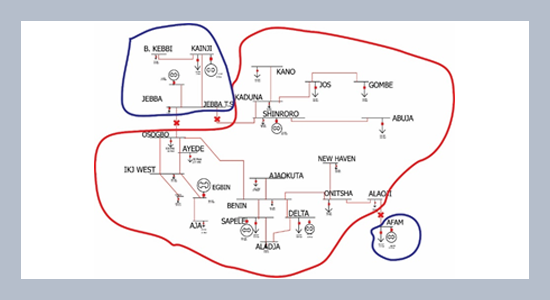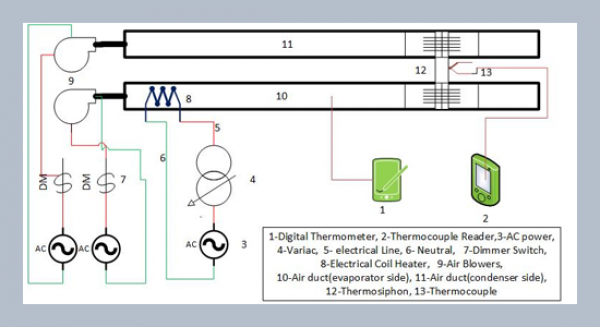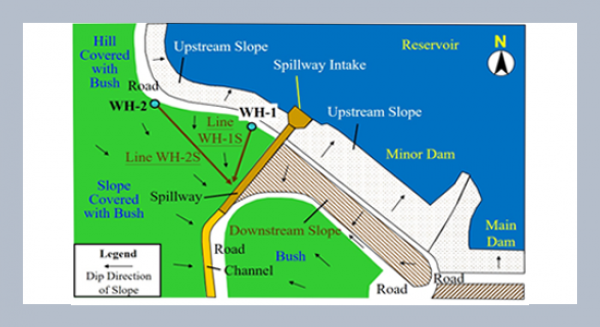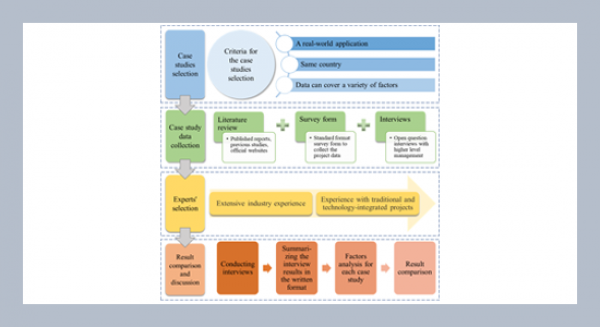Alayande Akintunde Samson1,2*, Olawale Popoola1, Vincent Mbey2 1 Centre for Energy & Electric Power, Department of Electrical Engineering, Tshwane University of Technology, Pretoria, 0002, South Africa 2 Deptartment of Electrical and Electronics Engineering, Faculty of Engineering, University of Lagos, Akoka, Yaba, Lagos, 23401, Nigeria
Download Citation:
|
Download PDF
Formulation of faster frameworks for swift detection of coherent generators in a power system operating under a severe disturbance has been a serious issue for the effective operation of modern power grids. Providing an efficient solution to this problem becomes more compounded when combining the issue of island formation during the disturbance. This paper, therefore, focuses on proffering an alternative but simple approach to coherent generator identification as well as detecting islands in an interconnected power system operating under severe disturbances. The practical 330-kV network of the Nigerian power system and the standard IEEE 30-bus system are used as case studies to test the effectiveness of the suggested approach in this paper. Based on the structural topology of the network, the critical transmission element where the effect of the disturbance is most severe is first determined. The approach is then used to determine the coherency threshold for identifying similarities in the network rotor angles. The normalized bus coherency matrix based on the Euclidean distances for all rotor angles is then determined considering the increasing oscillations in the systems' stability parameters. The symmetrical component matrix is then extracted from the normalized bus coherency machine matrix, which is explored to determine a threshold value for identifying coherent pairs of generators. The N-1 contingency analysis with distinct coherent groups is created and the results before and after the implementation of coherency analysis and islanding scheme are presented. The results revealed an effective generation-to-load matching with four islands formation within the Nigerian system and three island formation within the IEEE 30-bus network. The results obtained when compared with the existing results show that the suggested approach is able to predict the coherent groups of generators as well as identifying the island formed faster and effectively to avoid voltage collapse in the practical power systems.ABSTRACT
Keywords:
Coherency identification, Coherent generators, Controlled islanding, Euclidian distances, Electrical topology.
Share this article with your colleagues
Rogers, G. 2000. Power system oscillations. Springer Science & Business Media, LLC. Rogers, G. 2012. Power system oscillations. Springer Science & Business Media.REFERENCES
ARTICLE INFORMATION
Received:
2022-01-28
Revised:
2022-06-30
Accepted:
2022-08-22
Available Online:
2022-11-28
Samson, A.A., Popoola, O., Mbey, V. An alternative framework for implementing generator coherency prediction and islanding detection scheme considering critical contingency in an interconnected power grid. International Journal of Applied Science and Engineering, 19, 2022010. https://doi.org/10.6703/IJASE.202212_19(4).001
Cite this article:
Copyright The Author(s). This is an open access article distributed under the terms of the Creative Commons Attribution License (CC BY 4.0), which permits unrestricted use, distribution, and reproduction in any medium, provided the original author and source are cited.















